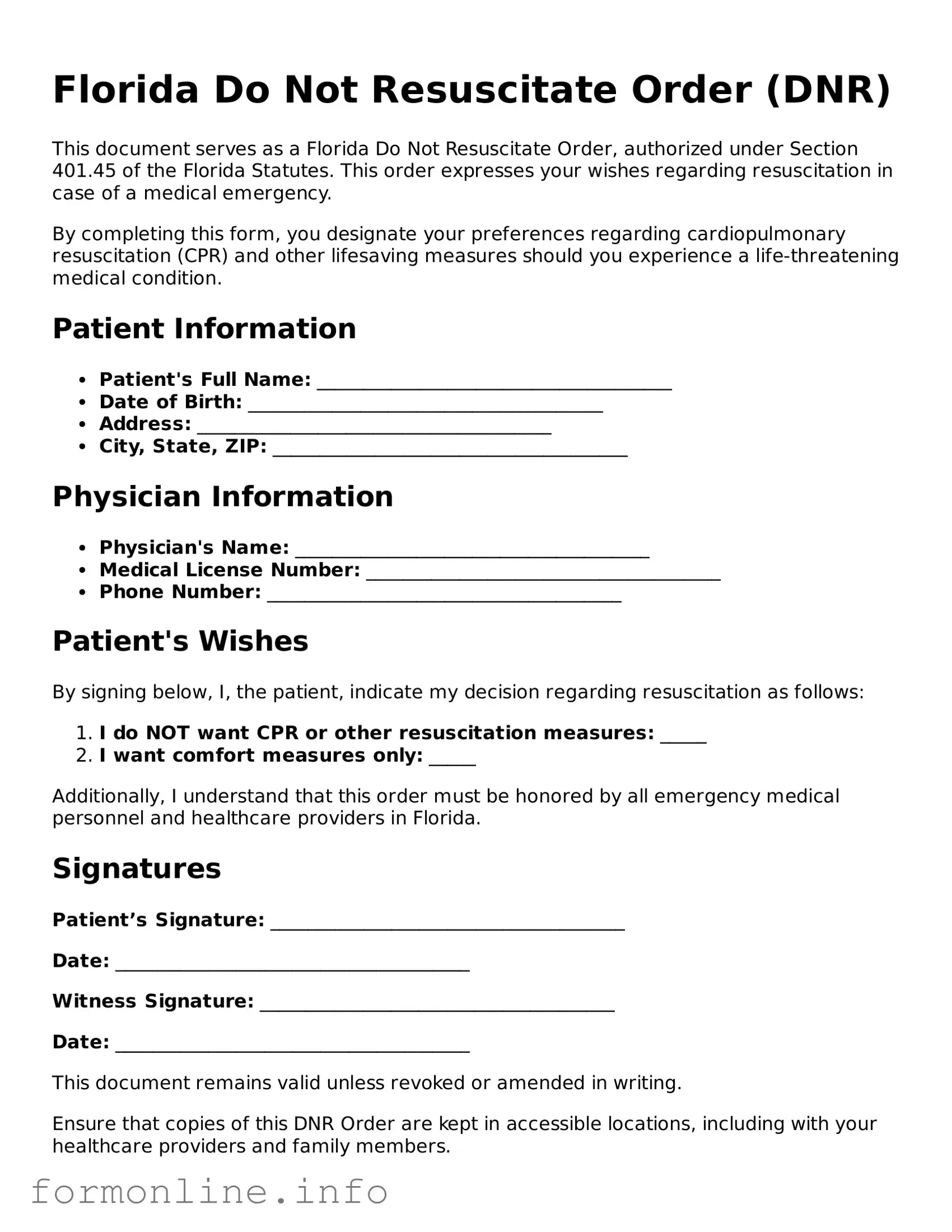Florida Do Not Resuscitate Order (DNR)
This document serves as a Florida Do Not Resuscitate Order, authorized under Section 401.45 of the Florida Statutes. This order expresses your wishes regarding resuscitation in case of a medical emergency.
By completing this form, you designate your preferences regarding cardiopulmonary resuscitation (CPR) and other lifesaving measures should you experience a life-threatening medical condition.
Patient Information
- Patient's Full Name: ______________________________________
- Date of Birth: ______________________________________
- Address: ______________________________________
- City, State, ZIP: ______________________________________
Physician Information
- Physician's Name: ______________________________________
- Medical License Number: ______________________________________
- Phone Number: ______________________________________
Patient's Wishes
By signing below, I, the patient, indicate my decision regarding resuscitation as follows:
- I do NOT want CPR or other resuscitation measures: _____
- I want comfort measures only: _____
Additionally, I understand that this order must be honored by all emergency medical personnel and healthcare providers in Florida.
Signatures
Patient’s Signature: ______________________________________
Date: ______________________________________
Witness Signature: ______________________________________
Date: ______________________________________
This document remains valid unless revoked or amended in writing.
Ensure that copies of this DNR Order are kept in accessible locations, including with your healthcare providers and family members.
